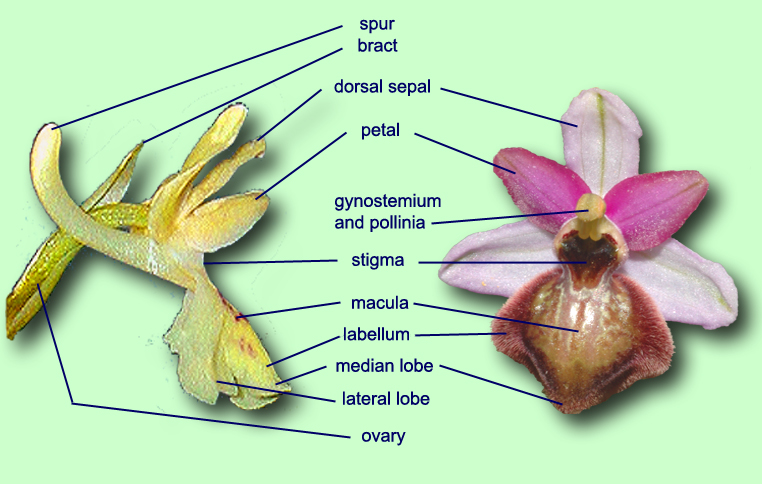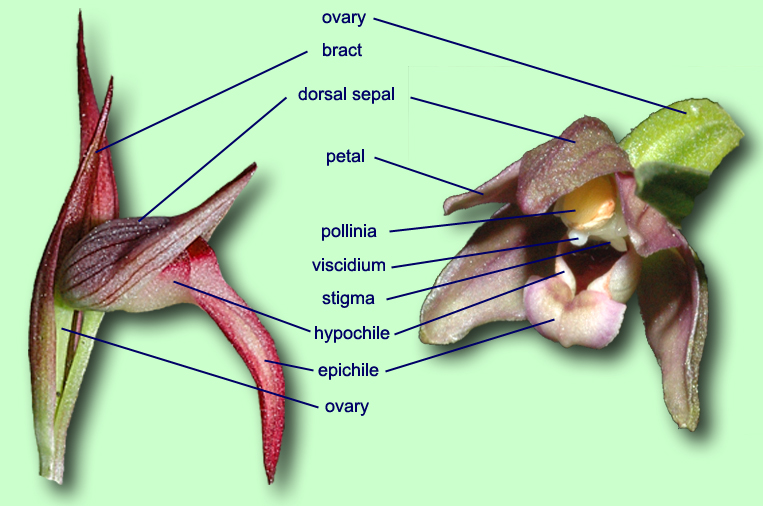Orchis provincialis Ophrys aveyronensis

Although most of orchids species look different, they have common characteristics that are described here succinctly.
Underground part
There are three types of underground parts: tubers equipping most of French orchids; rhizomes, kind of underground stems that can be observed, for example, on Epipactis or Cephalantera. Lastly, Liparis and Hammarbya use pseudobulbs for storage.
Aerial part
Similarly to other monocotyledons, the stem is never branched. Although their shape and arrangement are very variable from a species to the other, leaves include parallel nervures and are displayed either in rosette or gradually along the stem. They also can be reduced to scales. Inflorescence is often in spike and flowers are accompanied by bracts, small leaves varying in shape or consistency.
The flower
Orchid flower structure is bilaterally symmetrical and has three sepals, one dorsal and two laterals, sometimes forming a helmet. One of the orchid peculiarities is that one of the petals is differentiated in labellum or lip, it takes very variable shapes according to the species. The labellum can be divided in two articulated parts, hypochile and epichile ; also it often bears a spur, which contains sometimes nectar.
Orchid flowers are generally hermaphrodite, male organs are joined in the column or gynostemium that includes the pollinias. Female organs are the stigma, located at the bottom of the column, and the ovary, which is under the perianth.
Orchis provincialis Ophrys aveyronensis |
 |
-------------------------------------------------------------------------------------
Serapias lingua Epipactis helleborine |
 |
Home/menu (Contact : durbphil(at)numericable.fr)